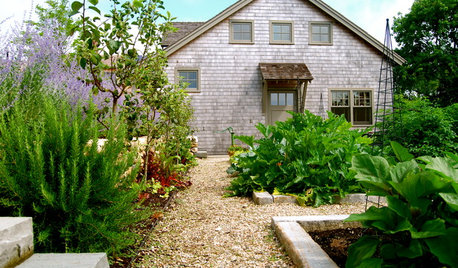Soil Test, Silt vs. Sand!
paperdesk
14 years ago
Related Stories

GARDENING GUIDESHave Acidic Soil in Your Yard? Learn to Love Gardening Anyway
Look to acid-loving plants, like conifers and rhododendrons, to help your low-pH garden thrive
Full Story
GARDENING GUIDESGet the Dirt on Your Garden’s Soil
Understand how your soil supports your plants so you can ensure your garden’s success
Full Story
GARDENING GUIDESHow to Stop Worrying and Start Loving Clay Soil
Clay has many more benefits than you might imagine
Full Story
GARDENING GUIDESGardening Solutions for Heavy Clay Soils
What’s a gardener to do with soil that’s easily compacted and has poor drainage? Find out here
Full Story
GARDENING GUIDESGardening Solutions for Dry, Sandy Soils
Has your desert or beachy site withered your gardening creativity? Try these ideas for a beautiful, easy-care landscape
Full Story
FARM YOUR YARDHow to Get Good Soil for Your Edible Garden
The nutrients in your soil feed the plants that feed you. Here are tips on getting it right — just in time for planting season
Full Story
LANDSCAPE DESIGNHow to Shape a Rain Garden and Create the Right Soil for It
Learn how to grade, lay out and amend the soil in your rain garden to support your plants
Full Story
GARDENING GUIDESThe Simple Secret to Gardening Success
Learn the kinds of soil and a DIY type test to make sure you’re putting the right plant in the right place
Full Story
HEALTHY HOMEGet the Lead Out: Lead Safety at Home
Keep your family safe by properly testing for and dealing with lead in old painted surfaces, water and soil
Full Story
GARDENING GUIDESGarden Myths to Debunk as You Dig This Fall and Rest Over Winter
Termites hate wood mulch, don’t amend soil for trees, avoid gravel in planters — and more nuggets of garden wisdom
Full StoryMore Discussions






Laurel Zito
docgipe
Related Professionals
Ilchester Landscape Architects & Landscape Designers · Maple Valley Landscape Contractors · Concord Landscape Contractors · Conroe Landscape Contractors · El Mirage Landscape Contractors · Fort Mill Landscape Contractors · Hilton Head Island Landscape Contractors · Lynwood Landscape Contractors · Morrisville Landscape Contractors · Post Falls Landscape Contractors · Tinton Falls Landscape Contractors · Vadnais Heights Landscape Contractors · Kissimmee Decks, Patios & Outdoor Enclosures · Wheaton Decks, Patios & Outdoor Enclosures · Eustis Decks, Patios & Outdoor EnclosurespaperdeskOriginal Author
paperdeskOriginal Author
gargwarb
paperdeskOriginal Author
gargwarb
Laurel Zito
ericwi
Kimmsr
piedmontnc
gargwarb
idaho_gardener
Laurel Zito
docgipe
gargwarb
Kimmsr
gargwarb
piedmontnc
Lloyd
rott
piedmontnc
Kimmsr
piedmontnc
gargwarb
Laurel Zito